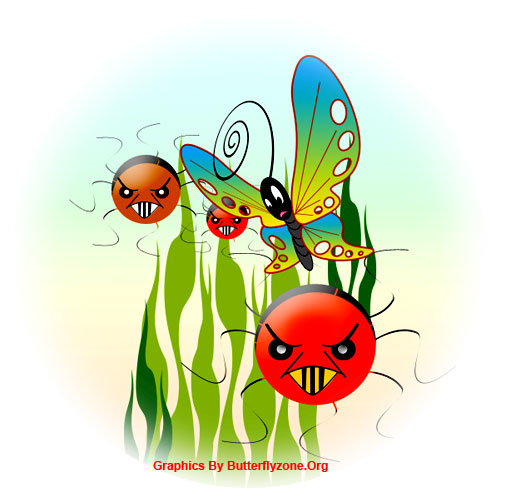OE Spore Infection in Monarchs

Infection and disease are common among living things. Most infections are managed or controlled. But some cause death.
In butterflies, infection by OE spores cause death and affect population growth. Monarchs are infected by OE spores.
OE is Ophrocystis elektroskirrha, a protozoan parasite. It belongs to the group of spore producing protozoan which cause malaria in man. OE spores occur in large numbers on the body of Monarchs. They are microscopic, lemonshaped and brown or black.
When female butterflies lay eggs on milk weeds, the OE spores are spread on leaves. Caterpillars get spores from leaves. Inside caterpillar’s body, each spore grows into its next stage or gametophyte, which produces gametes. Fusion of male and female gametes result in a stage called Sporophyte . The Sporophyte produces a number of spores.
By the time, caterpillar pupates, spores move to cocoon case. When the adult butterfly emerges from cocoon, the OE spores infect the butterfly in thousands. Eyes, antennae, wing veins, and mostly abdomen of the butterfly are infected with spores.
Heavy infection of spores leads to severe wing deformities. Such butterflies rarely take to flight and leave their cocoon. They fall to the ground and die.
That butterfly which is able to survive the infection, grow smaller and is weak fliers. Their life span is short.
OE infection is heavy in Monarchs which do not migrate, as in the case of South Florida butterfly population. In the eastern North American butterfly populations which migrate, OE spore infection is less. The reason is, in butterflies which stay at one place, infection spreads rapidly from parent butterfly to offspring butterfly (through caterpillar). This is vertical transmission of parasite. In such butterfly populations, the parasitic load becomes heavy.
Migrant butterflies have fewer chances of this vertical transmission and infection. Their parasitic load is less. Migrants have better survival chance than non-migrants.
